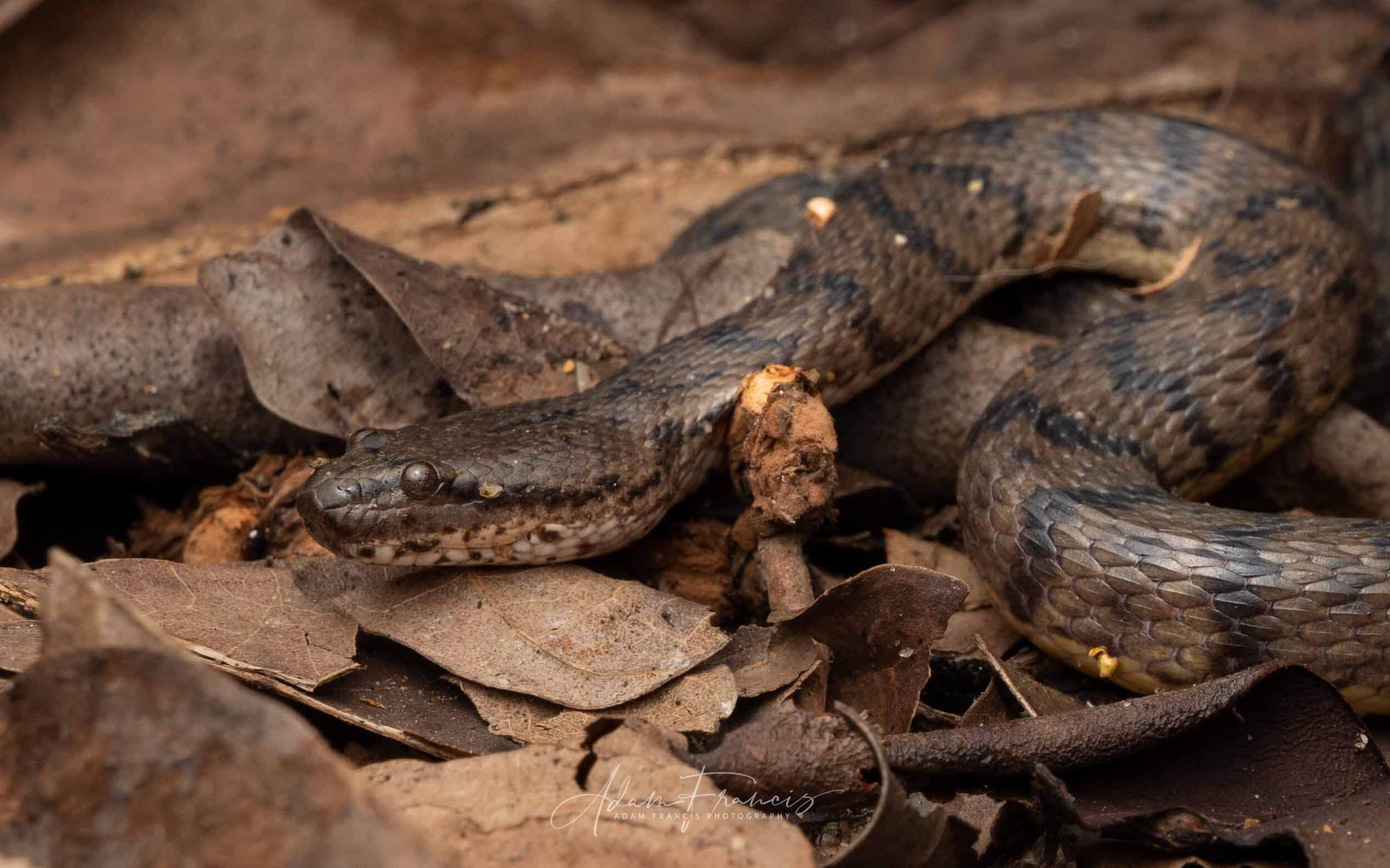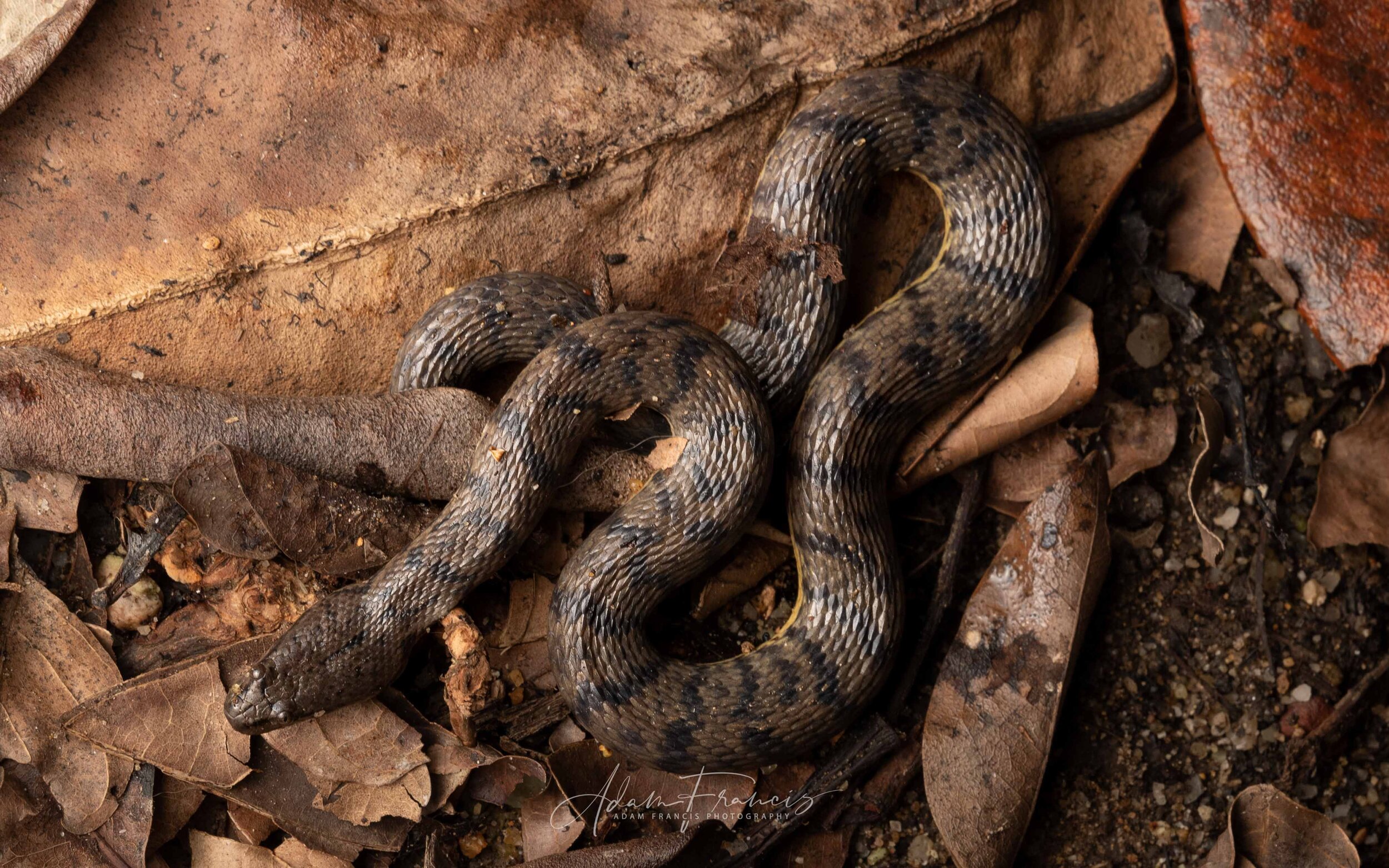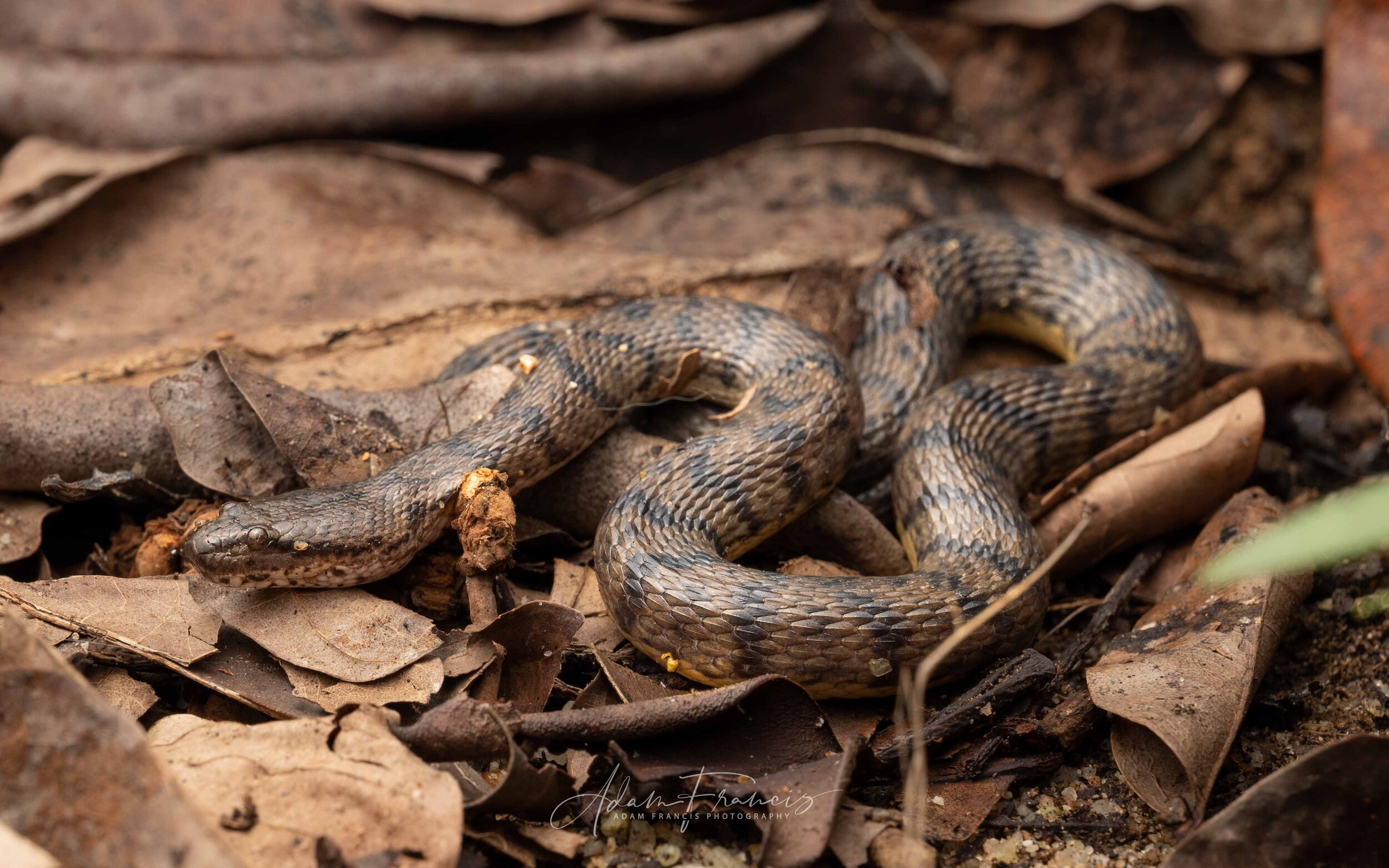SUMMARY
VENOM: Very mild - no known danger
PREVALENCE: Common where found
ACTIVE PERIOD: Mostly active at night
KEY ID FEATURES: Olive green with jagged black bands and black and yellow marked ventrals
BEHAVIOR: Aquatic, may be found shallow muddy costal mangrove water, burrows in mud and forages for prey in water
SIZE: Small - avg. 40-60cm
IUCN: LC - Least Concerned
OTHER: Aggressive if handled, will bite, death roll and defecate
QUICK ASSESSMENT 0-10
GALLERY
IMPORTANT: Many snakes have significant variance in coloration and pattern even within the same species. There can also be extreme differences in appearance from juveniles to adults so it is important to never assume you have properly identified a snake.



DESCRIPTION
Dog-faced Water Snakes are olive green with jagged black bands running the length of the body. Black and yellow ventrals. Eyes are positioned on top of the head characteristic of may aquatic snakes. Scales are keeled on the body which is cylindrical and medium in size. Relatively small with average size around 40-60cm and maxing out around 1 meter.
BEHAVIOR
Mostly nocturnal Dog-faced Water Snakes come out at night to hunt fish and amphibians. They tend to actively hunt in shallow costal mangrove mud flat water and will also bury into mud. They can also position motionless in wait for fish underwater. Quick to bite, defecate and squirm excessively and despite being average size bodied they are not considered dangerous to humans. They are mildly venomous but there are no known cases of serious envenomation or reactions in humans.
HABITAT
Found exclusively in mangrove and coastal mud flats it is a less common snakes to encounter but very abundant where they exist. Due to their diet of costal aquatic prey and preference to lay just under the surface of the water.
MISTAKEN IDENTITY
NO SNAKE SHOULD EVER BE HANDLED BY ANYONE BUT EXPERTS: Can be mistaken for some other aquatic snakes but generally not confused with dangerously venomous species.

